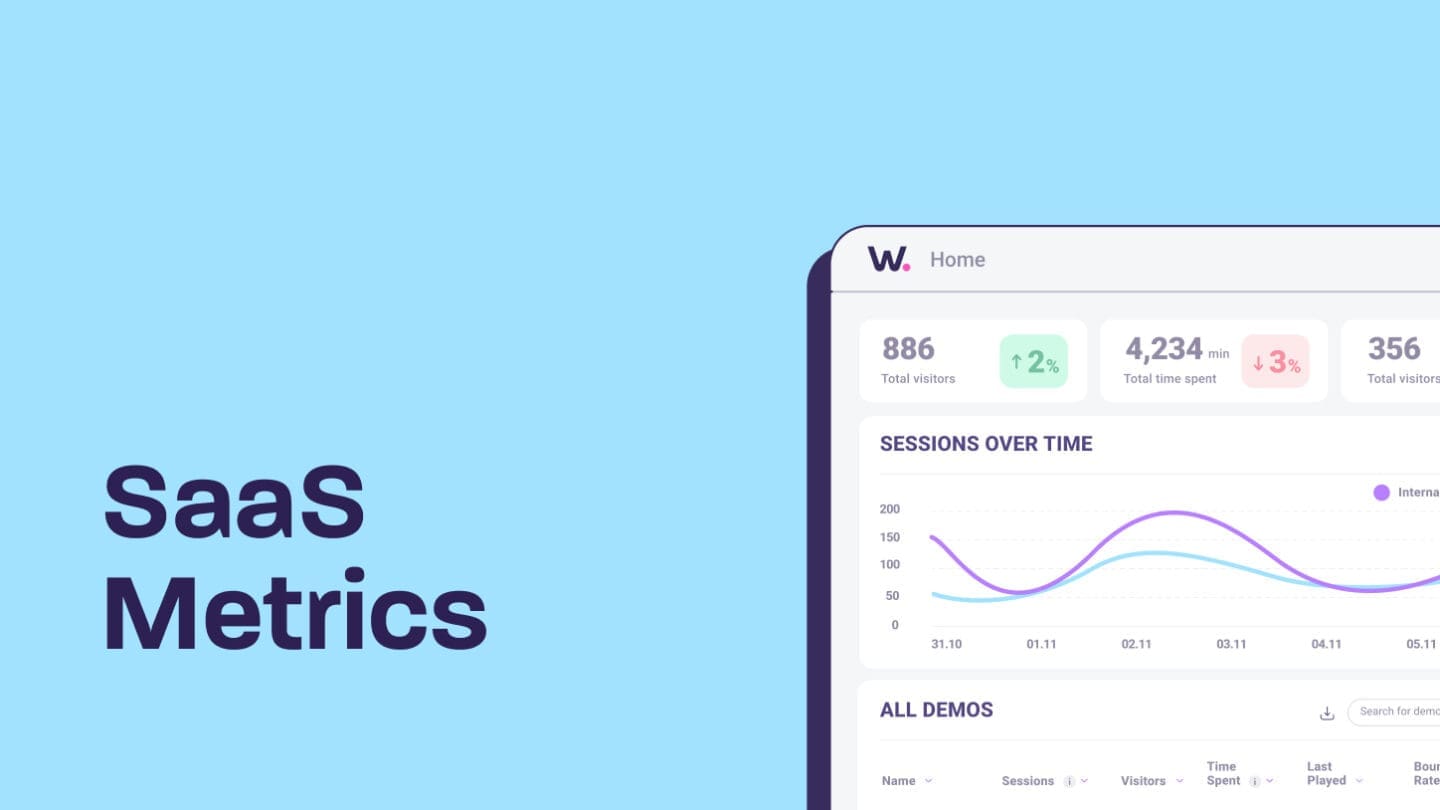Selling your product sounds like a good thing, no?
Well, we are here to teach you a thing or two. Because sometimes, selling your product can be the worst thing you can do if you’re trying to sell your product.
Yeah, you read that right. Let us explain.
When it comes to determining what makes your product better than the competition, there are two ways to approach it.
Your instinct may be to start rattling off a list of all the really cool features and compare your pricing. But that may not be the best move for you at this moment. For example, it may be a better idea to evaluate how your product can solve your customer’s issues more effectively.
In this article, we’ll compare the difference between product selling and solution selling in greater detail to help you decide which sales methodology will be the most effective for your industry and product.
- What is solution selling and what is product selling? And what is the difference between the two?
- What is product selling?
- The pros of product selling
- The cons of product selling
- What is solution selling?
- The pros of solution selling
- The cons of solution selling
- How does product selling and solution selling differ when it comes to the SaaS sales process?
- Qualification stage
- Pitch stage
- Demo stage
- Negotiation stage
- How to upgrade your sales process to make it more solution focused
What is solution selling and what is product selling? And what is the difference between the two?
First, calm down. We’ll explain everything.
Every salesperson has their own style of selling. Whether you are a product or a solution salesperson depends largely on what product you sell and what resonates with your customers. Let’s break it down:
What is product selling?
Product selling is when sales teams focus on the product’s features when trying to sell it. The sales style emphasizes what the product does, the features it has, and its price point.
For example, if a product seller were to sell a blue ballpoint Bic pen, they might talk about the shape and the ink flow and maybe even the amount of writing it can do before the ink runs dry. All of these traits are features of the product so the rep is product selling.
In B2B SaaS sales, when reps are product selling, it usually means that they are looking to close the deal quickly and move on to the next.
The pros of product selling
- Salespeople can share the same pitch with every prospect, which requires less preparation.
- It’s suitable for simple products sold based on their features.
- It’s a good method for selling products based on price as a differentiator.
The cons of product selling
- Less engaging than solution selling
- Doesn’t answer client questions or speak to client pain points, which makes it seem less relevant
- Prioritizes features over the value it delivers
- Doesn’t help salespeople and clients determine whether or not a product is a good fit for specific customers
- Focuses on the short-term, not the long-term value of a customer
What is solution selling?
Instead of focusing on describing the product itself, solution selling emphasizes the ways that the product can meet each customer’s needs.
By and large, sales teams involved in solution selling provide their customers with more in-depth, long-term reasons for purchasing the product. They place a lot of emphasis on the customer’s pain points that they might be experiencing and the ways their product can help solve them. They stress the ways the product can be an asset to their customer’s business, and the impact or return on investment (ROI) they might expect.
Basically, product selling focuses on closing a fast, short-term sale while solution selling often considers the bigger picture.
The pros of solution selling
- Elevates the conversation and makes it more engaging for the customer
- Helps sales representatives gather more insight about their prospects and customers by asking relevant questions
- Focuses on the value the product brings to the customer and the outcomes it can deliver—not just its features
- Allows sales reps to demonstrate that they fully understand the customer, positioning them as trusted advisors
- Lets customers realize that your product is a good fit for their business, increasing the customer lifetime value and retention
The cons of solution selling
- Requires a greater depth of product knowledge
- Demands more research into your prospective customers
- Takes longer to sell to a customer using the solution sales approach
How does product selling and solution selling differ when it comes to the SaaS sales process?
Product selling works well when you are selling low-cost, fast-moving products where there isn’t much differentiation between solutions or products, like retail goods.
But if you are a B2B SaaS company with highly customized packages or complex technology, you need a solution-selling approach.
Let’s look at how the two approaches vary in practice during every step of the sales process.
Qualification stage
During the lead qualification stage, the sales team determines whether or not a prospective customer is a good fit for the business.
Product sellers will focus on the product features and describing what the product is and ask whether the customer is looking to buy it.
Solution sellers, on the other hand, will first try to understand the customers’ pain points and then explain why their solution is a good fit.
Here’s an example of product selling during the qualification stage
“Hello! We have a CRM feature that automatically logs phone calls and notes. We also have automated dialer software that will shave 30 seconds off each sales call. And best of all, we only charge $35 per seat, instead of the usual $50. Are you interested?”
Here’s an example of solution selling during the qualification stage
“What are some of the problems you’re experiencing with customer relationship management? How significant is this problem? How much time would you say your team wastes every day on manual inputs?
“I think we might be able to cut that time down significantly with our solution. Would you like to know more?”
Pitch stage
During the pitch stage, sales staff work to explain to their prospects that their solution or product is the right choice for them.
Product sellers will usually have standard and rehearsed pitches that they use for every customer. It’s usually very technical, focused on pricing, and what the features do.
Solution pitches focus on the outcome and are more customer-centric. They may mention the features but only in relation to how they help companies accomplish their goals. Pitches are highly personalized.
Here’s an example of product selling during the pitch stage
“Our CRM solution is equipped with lead capturing tools, task management solutions, reporting functionality, sales pipeline templates, and more. We use an automated sales dialler integration for outbound calling.”
Here’s an example of solution selling during the pitch stage
“You’ve already mentioned that you are concerned that staff members are making less than 50 sales calls a day because of the performance issues you’ve experienced with your current CRM software solution and the number of manual inputs you have to make.
“We can double your daily sales calls through automation. Because you’ve mentioned that your phone system is a problem too, we can actually integrate with an outbound sales dialler through a third party that can shave even more time off each call, which could bring you to 75 more calls a day. At your current closing rate, that could mean an extra $5,000 of revenue every day.”
Demo stage
The demo stage is where sales staff stop telling customers what their product or solution can do and start showcasing it.
A product sales approach will run the same standard demo presentation for every client, regardless of their industry or needs.
A solution-oriented approach will bring a highly personalized and interactive sales demo to the client, showing them exactly how the product will solve their issues.
Here’s an example of product selling during the demo stage
“Here you can see all of the features in our dashboard. You can import data, assign roles, draw a report and run a calculation.”
Here’s an example of solution selling during the demo stage
“You’ve mentioned that reporting is a big concern for you, because you have limited insight into what your staff are busy with, correct?
“Let me show you how our software approaches the problem. Here you have all of the data pulled from the various sources, collected and processed and displayed in a single dashboard.”
Negotiation stage
During the final stage, salespeople have to close the deal and agree on the terms.
Product sellers are hard negotiators. They believe that their product is valuable and try to upsell on features. They aren’t willing to adapt to the customers’ needs and sell the product as-is.
Solution sellers are always willing to negotiate. They suggest a combination of features and the right pricing plan for prospects to get the most out of the agreement. They listen carefully when handling objections and can demonstrate the ways their product is still a good fit.
Here’s an example of product selling during the negotiation stage
“Unfortunately we’re not flexible on that price. But you will get the entire package on that tier, including the reporting and analysis feature, and five seats for your users.”
Here’s an example of solution selling during the negotiation stage
“Ok, so your budget is $200 per user right?
“You said that you already have a contact management solution, so we don’t need that. I can cut out some of the reporting features you said you don’t foresee using, and that should bring us to $189 per user. Does that work for you?”
How to upgrade your sales process to make it more solution focused
In B2B SaaS sales, selling with a focus on solutions rather than products is usually the best model for sales reps to follow. That doesn’t mean that sales representatives shouldn’t understand the finer technical details of the solution they are selling. Every customer is different, and some may prefer talking about pricing or features in greater detail than others.
What really makes a solution selling methodology superior is that it’s customer-centric. It focuses on the needs and wants of each specific customer and tailors the sales experience for them. Every sale should be personalized and focused on their requirements, not just generic features and benefits.
By using a product demo platform like Walnut, your sales reps are empowered to provide personalized and interactive sales demos that address each prospect’s unique pain points. They can also give customers the opportunity to try the product for themselves and get a better feel for how the product works.
This will allow your team to create a customized, unique sales experience for each individual client. That means you can sell the whole solution, not just the product.
Ready to revolutionize your product demos? Book a meeting with us now by clicking that “Get Started” button on the top of the screen.



